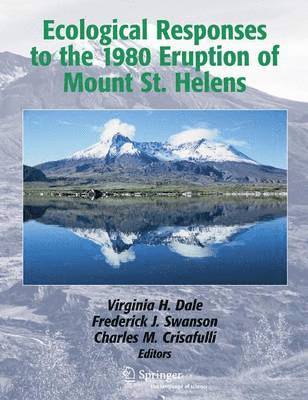
Fler böcker inom
- Format
- Häftad (Paperback / softback)
- Språk
- Engelska
- Antal sidor
- 342
- Utgivningsdatum
- 2005-05-20
- Upplaga
- 2005
- Förlag
- Springer-Verlag New York Inc.
- Medarbetare
- Crisafulli, Charles M (red.) / Franklin, J.F.
- Dimensioner
- 274 x 217 x 17 mm
- Vikt
- ISBN
- 9780387238500
- 854 g
Ecological Responses to the 1980 Eruption of Mount St. Helens
Häftad,
Engelska, 2005-05-20
503
- Skickas från oss inom 7-10 vardagar.
- Fri frakt över 249 kr för privatkunder i Sverige.
Finns även som
Passar bra ihop
De som köpt den här boken har ofta också köpt Braiding Sweetgrass av Robin Wall Kimmerer (häftad).
Köp båda 2 för 628 krKundrecensioner
Har du läst boken?
Sätt ditt betyg »
Fler böcker av författarna
-
Forest Under Story
Nathaniel Brodie, Charles Goodrich, Frederick J Swanson
-
Ecological Modeling for Resource Management
Virginia H Dale
-
Hypoxia in the Northern Gulf of Mexico
Virginia H Dale, Catherine L Kling, Judith L Meyer, James Sanders, Holly Stallworth
-
Effects of Land-Use Change on Atmospheric CO2 Concentrations
Virginia H Dale
Övrig information
Virginia Dale is a Corporate Fellow in the Environmental Sciences Division at Oak Ridge National Laboratory.¿ She is also an adjunct faculty member in the Department of Ecology and Evolutionary Biology at the University of Tennessee. Fred Swanson is¿a Research Geologist¿at the USDA Forest Service Pacific NW Research Station¿in Corvallis, OR. Charles Crisafulli is an Ecologist at the USDA Forest Service Pacific Northwest Research¿station in Olympia, WA.
Du kanske gillar
-
What We Can Know
Ian Mcewan
Häftad -
Sapiens
Yuval Noah Harari
Häftad -
Less
Patrick Grant
Häftad


